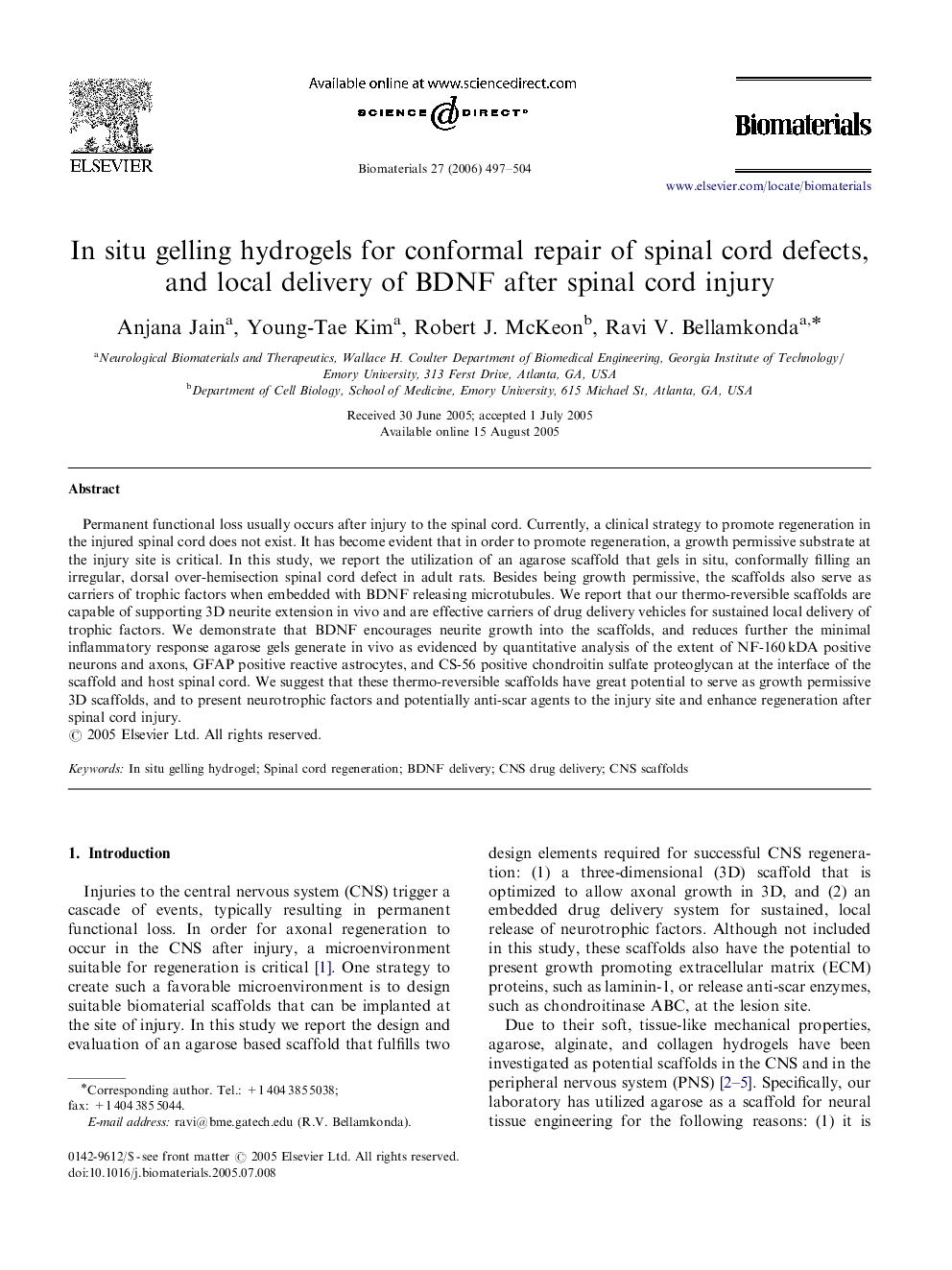| Article ID | Journal | Published Year | Pages | File Type |
|---|---|---|---|---|
| 11812 | Biomaterials | 2006 | 8 Pages |
Permanent functional loss usually occurs after injury to the spinal cord. Currently, a clinical strategy to promote regeneration in the injured spinal cord does not exist. It has become evident that in order to promote regeneration, a growth permissive substrate at the injury site is critical. In this study, we report the utilization of an agarose scaffold that gels in situ, conformally filling an irregular, dorsal over-hemisection spinal cord defect in adult rats. Besides being growth permissive, the scaffolds also serve as carriers of trophic factors when embedded with BDNF releasing microtubules. We report that our thermo-reversible scaffolds are capable of supporting 3D neurite extension in vivo and are effective carriers of drug delivery vehicles for sustained local delivery of trophic factors. We demonstrate that BDNF encourages neurite growth into the scaffolds, and reduces further the minimal inflammatory response agarose gels generate in vivo as evidenced by quantitative analysis of the extent of NF-160 kDA positive neurons and axons, GFAP positive reactive astrocytes, and CS-56 positive chondroitin sulfate proteoglycan at the interface of the scaffold and host spinal cord. We suggest that these thermo-reversible scaffolds have great potential to serve as growth permissive 3D scaffolds, and to present neurotrophic factors and potentially anti-scar agents to the injury site and enhance regeneration after spinal cord injury.
